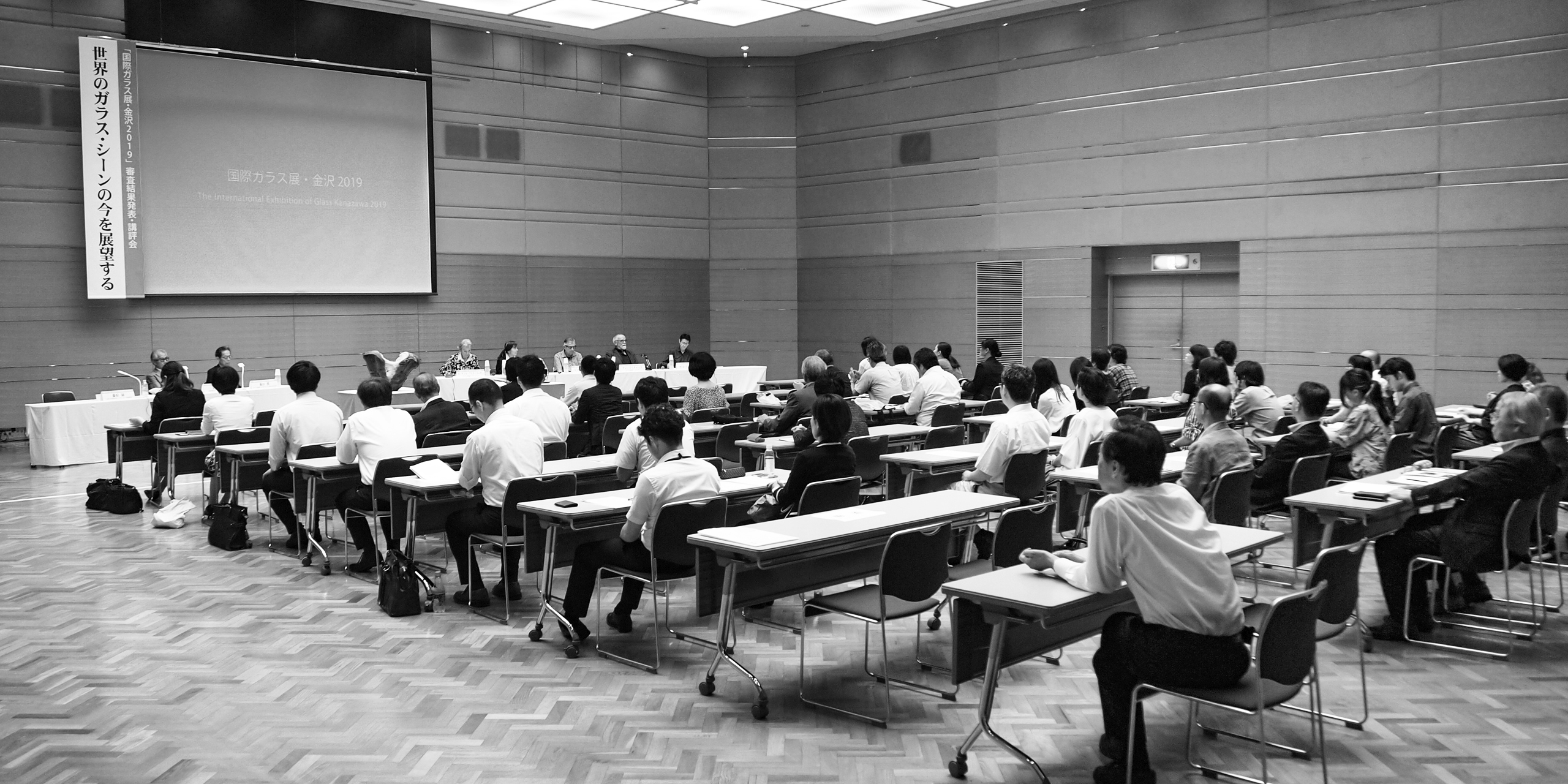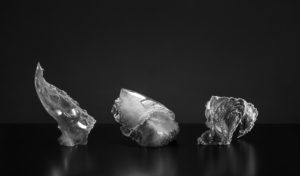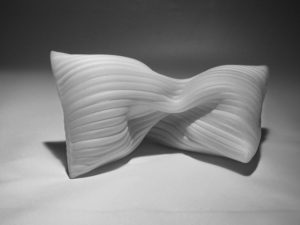Panel Discussion

審査員特別賞受賞作品について(2/2)

Fly / In between / Sink
H56×W33×D25
H36×W40×D26
H32×W34×D26
2018
宮木 志江奈
MIYAKI, Shiena (Japan)
TAKEDA ───── The artist is from Latvia, isn’t she?
Next we will introduce the Jay Musler Prize winner. He selected the work by Shiena Miyaki. The work consists of three pieces. Now the image on the screen shows the three pieces one by one. The sizes of the three pieces are almost the same; 56cm x 33cm x 25cm, and 36cm x 40cm x 26cm, and 32cm x 34cm x 26cm. Mr. Musler, please comment on this work.
MUSLER ───── This piece by Shiena Miyaki gets the Jay Musler Prize. I got hooked on this piece by the title alone. It did not tell me much about the technique, but it really got my attention and imagination going about a fly drowning in a sink and water splashes in a big wave. The inspiration is as follows; “There are lights and shadows in my heart. But I am so vague that I cannot completely fit in either the lights or the shadows. I’m always halfway, wavering between ‘me full of hope’ and ‘me full of fear’ I tried to express such ‘distorted myself’ in my work.”

R-IX
H20×W37×D20
2019
大木 春菜
OHKI, Haruna
(Japan)
TAKEDA ───── Thank you. Next, a comment on the Jun Fujita Prize winner. The size is 37cm wide, 20cm deep, and 20cm high. It is not a big work.
FUJITA ───── This is a work by Haruna Ohki titled “R-IX”. I do not understand what the title means. The work looks like a twisted pillow. The size is almost the same as a pillow. The technique only says cane work. With a closer look at the work, you see long horizontal lines. Perhaps she makes fine sticks one by one, puts them together and heats them to make sheets. Then she arranges the sheets again and forms them while blowing. She twists and taps them in the middle of the forming process. I found a very small mouthpiece at the edge of the work.
The artist is quite young. My main expertise in glass art is blowing glass. So I imagine that while blowing glass, she finds the best timing of stopping expanding and starting to bend by seeking for the best form of trembling glass. This is my impression. Her inspiration goes as follows; “While blowing glass, I sometimes feel the will or life of glass from its movement.” The form is simple but elegant and exquisite.

季秋の夕暮れ
Sunset of Autumn
H40.2×W44.3×D21
2018
藤田 創平
FUJITA, Sohei (Japan)
TAKEDA ───── Lastly, my prize. I selected the work by Souhei Fujita. The work is 40.2cm high, 44.3cm wide and 21.0cm deep.
This is a very conspicuous work. The form is sharp and the color combination is unique. I seldom come across this color combination, and it is truly refreshing to me. The title “Sunset of Autumn” tells us that he is inspired by the autumnal season. How such inspiration can be expressed depends on abstract expression, the result here has come out as this work.
As I mentioned at the beginning of the symposium, the exhibition this year received many sculptural works and only a few with a function, including this work. At the Final Assessment, this work leapt to my eyes. For both sculptures as well as crafts, each artist’s originality is significant. Sohei Fujita is still young, and by keeping his careful and beautiful finishing, while pursuing novelty in colors and forms, he will be able to create many more excellent works. Powerful emotions remain after seeing something new. From such a perspective, I selected this work as my special prize winner.
I would like to bring the Special Symposium to a close. Today our audience includes a few prize winners. I would like the Secretariat to introduce them to us and the audience.
